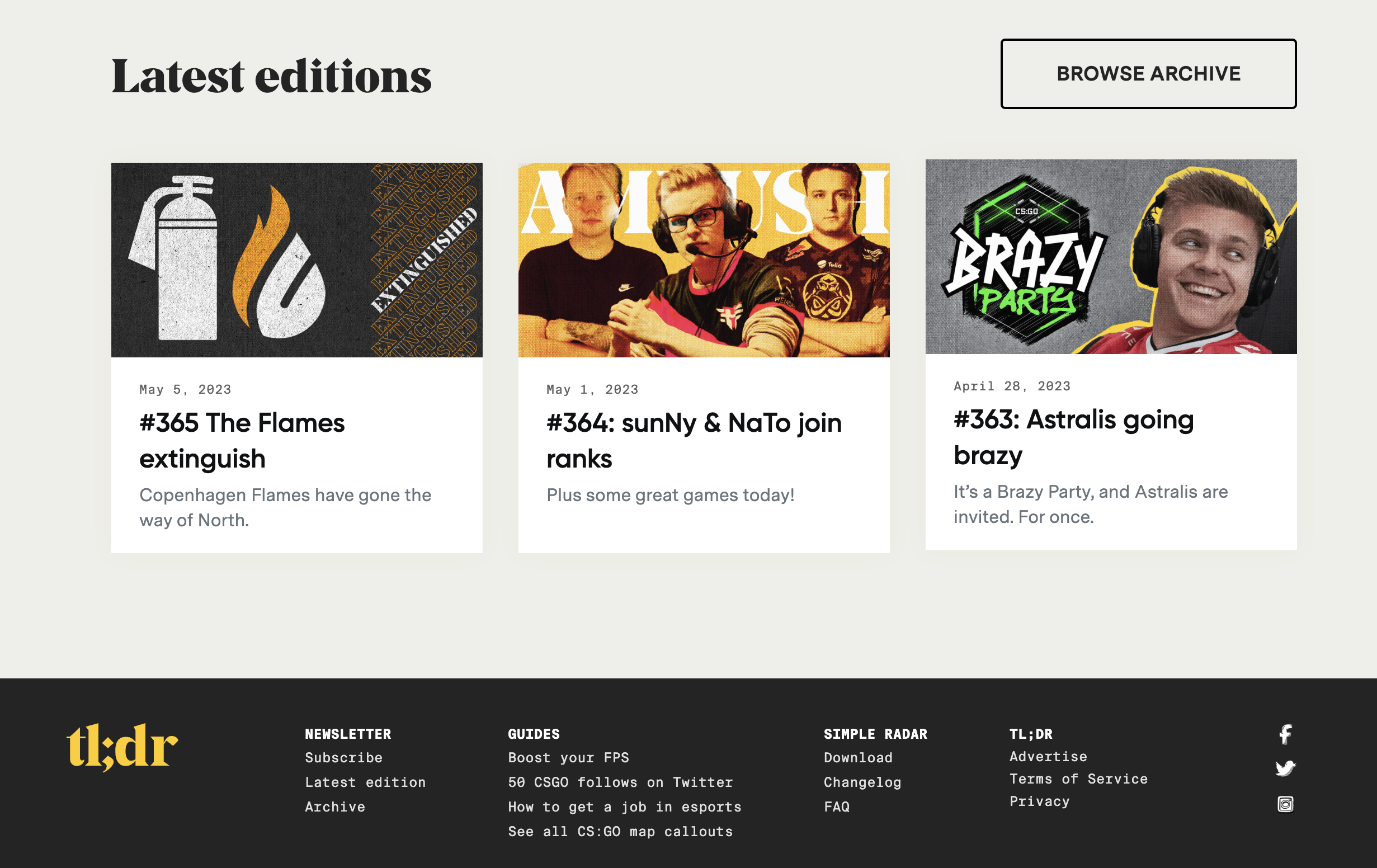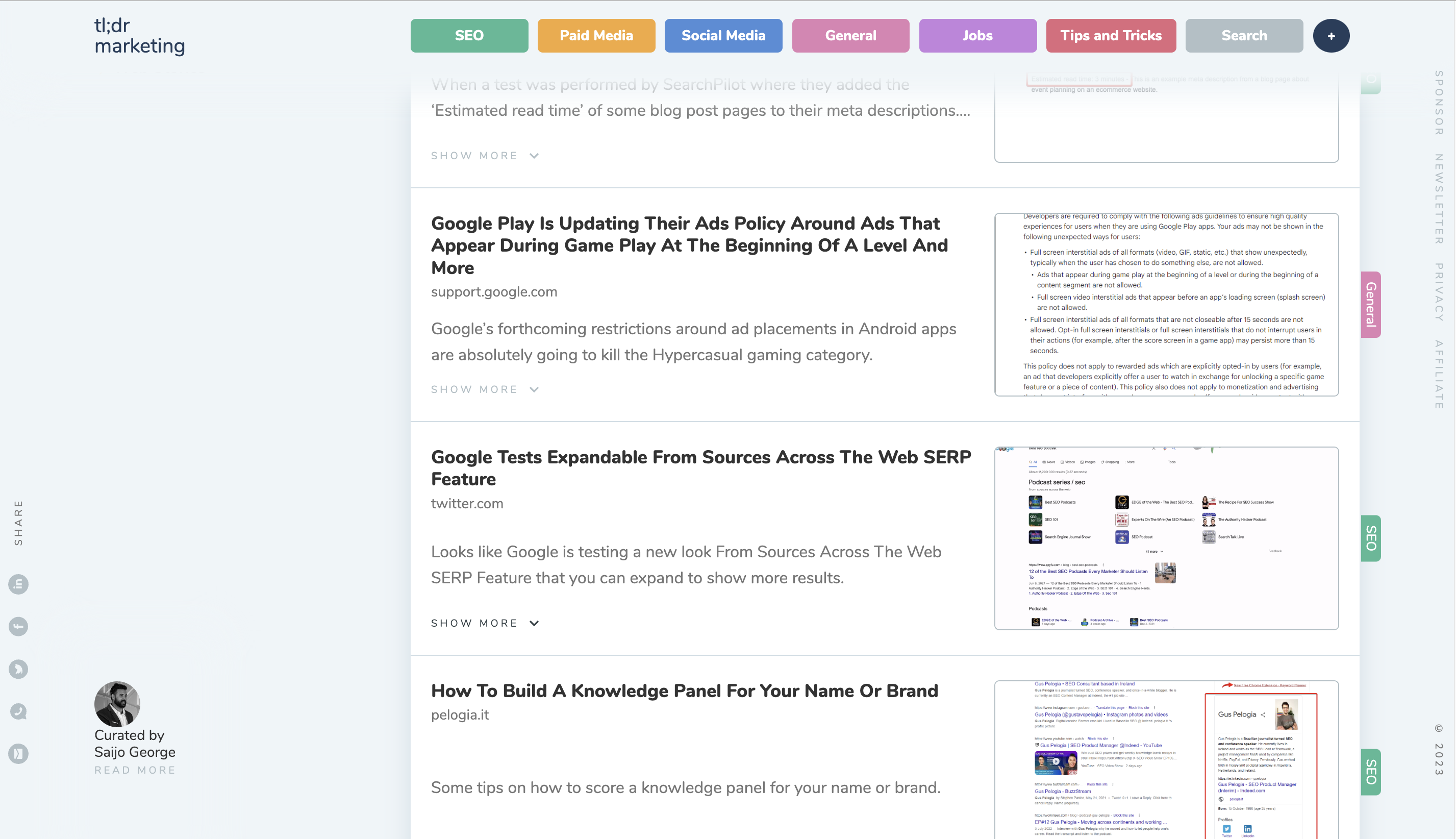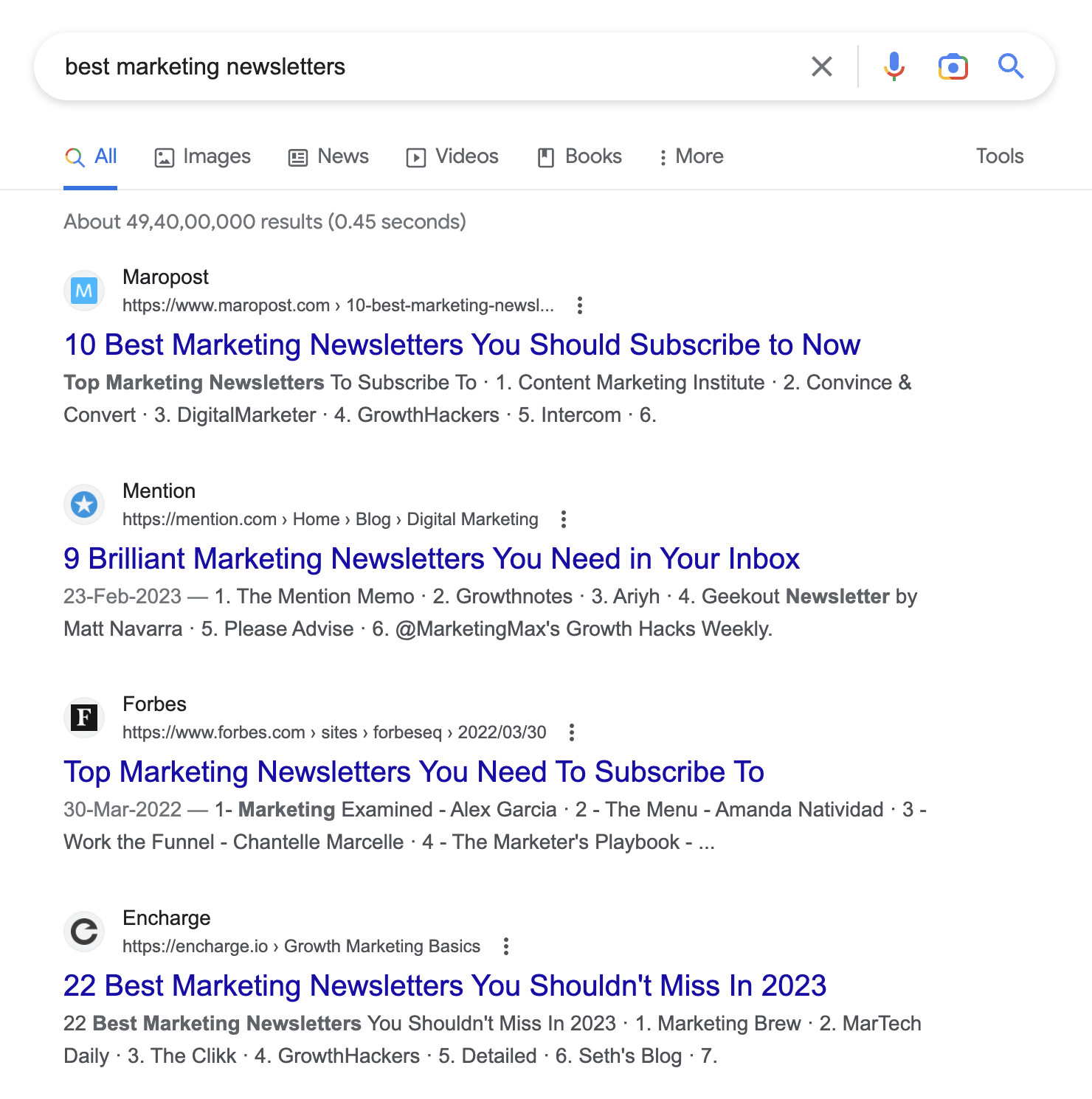Most newsletters tend to grow with referrals and social shares, but that’s also because most newsletter authors ignore SEO. When done correctly, SEO tends to help grow your newsletter incrementally by constantly sending traffic to your newsletter website.
Most of the things we’ll discuss in this blog would low-effort tips so that you can start seeing results without investing too much of your time in the beginning.
Importance of SEO for newsletters
As said above, SEO is an excellent way of bringing organic traffic to your website, which has the potential to get converted to a subscriber and help your newsletter grow.
There are several benefits of putting efforts towards SEO; here are some:
- High ROI: Implementing and improving SEO is very cost-effective, unlike paid ads; just by putting a little effort over a while, you can get a substantial amount of traffic coming organically, which makes the ROI of SEO very high.
- Build brand awareness: The more people start seeing you and your brand, the more aware they get. Additionally, if they see the same newsletter or person popping up on their search as well as social – it builds trust and makes them more likely to subscribe.
- Open new growth channels: An SEO-optimised newsletter can also open up other growth channels. For instance, if you have good SEO content on your website, people will start linking back to your content, resulting in more organic traffic and subscribers. You can also collaborate with other websites or influencers in your niche to get more visibility and traffic.
Ways to improve SEO
There are several ways to improve SEO, some hard and some easy. We’ll talk about some easy yet result-oriented ways to step up the SEO for newsletters.
P.S. The tips we will discuss below are written based on the assumption that you already have a website for your newsletter.
Improve your website content
Your website content contributes the most towards SEO and how it would rank for keywords your users are searching for on Google.
The first step here is to identify the keywords for which you want to start ranking. You don’t need any tools to find this; simply put yourself in your users’ shoes and think about what keywords they’ll search for in your niche. Though is the most basic way, a dedicated keyword research tool would be a good choice if you plan to go deeper.
Now that you know your primary keywords try to optimise your website’s copy and meta tags around these keywords.
You should start by editing your meta title and description. Post which you can move towards changing your website title and all other content you have on there.
Also, don’t try to stuff in keywords; Google may penalise you for that; try to write organic, engaging copy that would define your content and make the user subscribe or visit other pages, such as blogs you might have written.
Regularly update your webpage
Updating your website regularly is another important point, as this gives your regular readers and Google the idea that the site is still active.

The easiest way to achieve this is by adding all your latest issues to your newsletter’s landing page. This way, your website gets updated, and others can easily read your content before subscribing.
Post your newsletters as blog
Don’t know why but only a handful of newsletter authors share their past newsletter issues on their website, and among those who do, many share it in a way that Google can’t index it.
The right way of doing this is by hosting the content on your website as a blog. This way, everything remains under your domain name, and users who recently learned about you can easily read your old content.

It’s also easier for Google to index these pages as they are on your website, and you can submit these links to Google by submitting your sitemap URL once in the search console.
Link building on similar sites
Before discussing link building, remember that this should be done organically; buying links isn’t a good idea. Google also suggest not doing this.
Link building is a process of having your newsletter’s website link mentioned on other websites with written content that appeals to the same target audience.
Let’s try to understand this with an easy example; assume you have a newsletter which talks about freelancing. Now you’d want to link to sites want to write or have already written on topics like “Best newsletters for freelancers”, “Resources for freelancers”, etc.

To achieve this, you can either start building credibility by sharing great content and letting them mention your automatically, or you can directly contact the blog’s author and share your newsletter and see if they can mention it there.
You can also try to build links for your blogs similarly.
Ensure you follow Google’s guidelines
Last but not least, following Google guidelines and ranking factors are very important. These are generally the ones that Google thinks will improve the web experience for users.
Here’s a list of important ranking factors:
- Mobile-friendliness: In 2019, Google switched to mobile-first indexing due to the significant contribution of mobile devices to web traffic. As a result, Google now prioritizes mobile-friendly sites.
- Website load time: The time your website takes to load is known as website load time. In 2018, Google rolled out an update which made load time a ranking factor. Apart from SEO benefits, a faster-loading website also has higher conversion as it provides a better experience.
- Quality content: Google strives to provide its users with the best experience possible. Therefore, it is essential to have good quality content that is relevant to your target audience. Make sure your newsletter content is informative, engaging, and well-written to improve your SEO ranking. Your content is judged on the basis of expertise, authority, and trust (E-A-T).
Conclusion
These were just a handful of ways by which you can start improving your SEO, your goals should be to start implementing these first if you haven’t already and then move to a more dedicated process.
Just to give you a bit of insight, once you have done the basics like the tips shared above you can move towards a more dedicated way of organic marketing. This can be done by having a content marketing plan in place based on keyword research so more and more content starts ranking.
You can also focus on guest blogging on other influential websites which will not only fetch you backlinks but also build trust as their audience starts to notice you there.


No Comments
Leave a comment Cancel